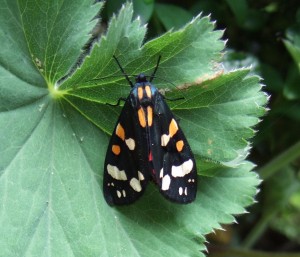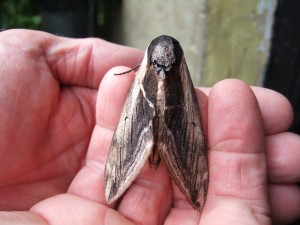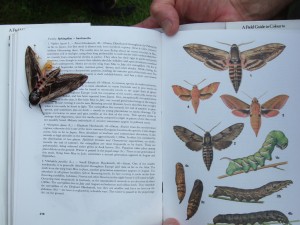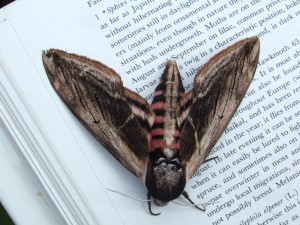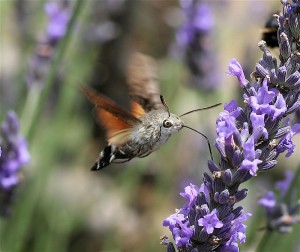In the last couple of weeks we have had lots of beautiful scarlet tiger moths (Callimorpha dominula) in the garden.
I was chatting on the phone the other day and looking out of the study window as I did so, on to the garden. The tiger moths were flying and I could look down on them, and they have the most brilliant flashes of red as they fly—quite striking. You can just see a hint of the red in the photo above, under the wing. Here it is in all its glory:
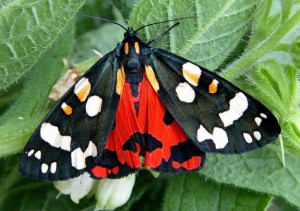
Scarlet tiger moth with the red hindwings showing. Photo by Chris Manley for Butterfly Conservation.
They’ve been appearing each summer for about as long as we have been growing green alkanet (Pentaglottis sempervirens), and various reference books tell me that the scarlet tiger moth caterpillars feed mostly on comfrey (Symphytum officinale), which is a member of the Boraginaceae (borage or forget-me-not plant family), like the green alkanet. So it is not too much of a stretch to wonder if the caterpillars are feeding on our green alkanet plants, though I haven’t seen any direct evidence of this apart from the fact that the moths are concentrated in the part of the garden where the alkanet is. We have masses of honeysuckle in the garden (Lonicera caprifolium, Lonicera periclymenum ‘Serotina’ and Lonicera x italica) and the Butterfly Conservation page on the moths says the older caterpillars feed on that, so that might where they are dining.
One of the other really striking moths we see in our garden during the day is the large privet hawk moth (Sphinx ligustri). One time Chap found one on the lawn.
We moved it out of harm’s way and when next we looked it had flown off. We see these about once a year: they’re not at all common round here, which is a shame as they are so beautiful.
The third moth we see during the day is the hummingbird hawk moth (Macroglossum stellatarum). We see a lot of these every year, usually in the later summer. They especially like feeding on our phlox flowers (Phlox paniculata ‘Mount Fuji’), and often are feeding right until dusk, darting from flower to flower in a flurry of wings—they make an audible ‘whirr’ as they fly. These little beauties fly so quickly that I haven’t yet managed to get a decent photo of one.
